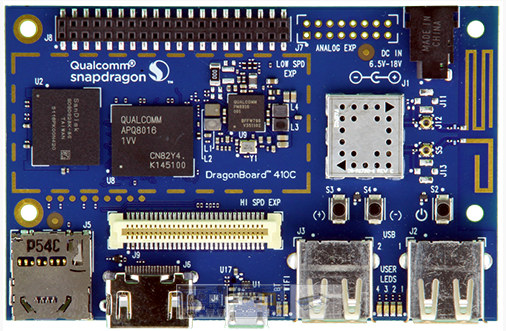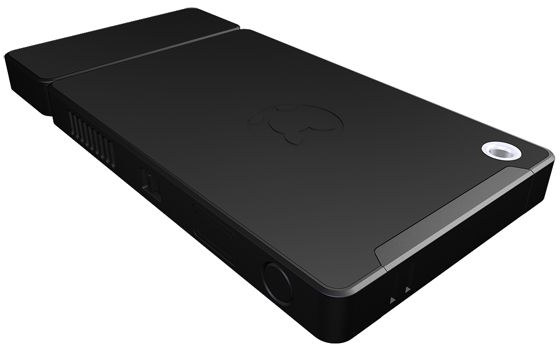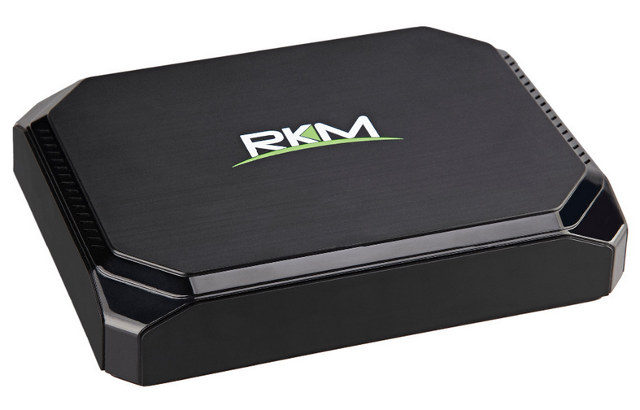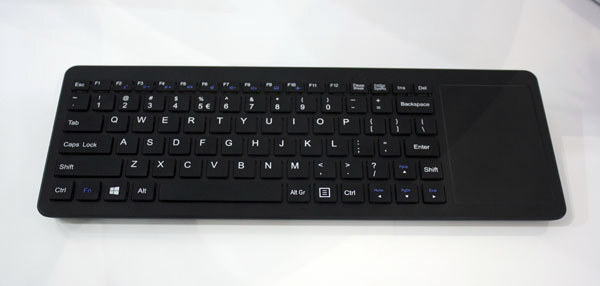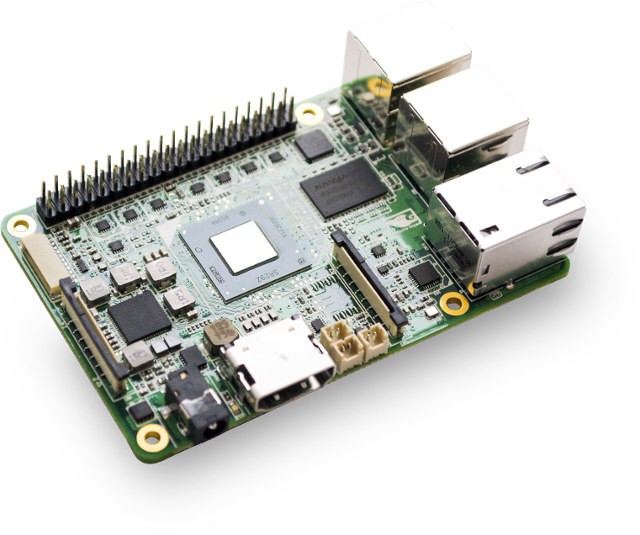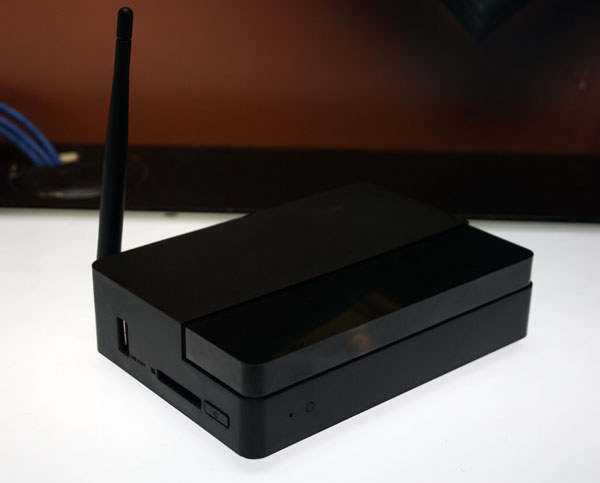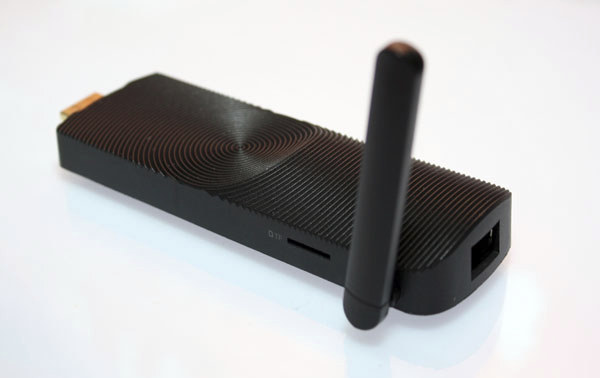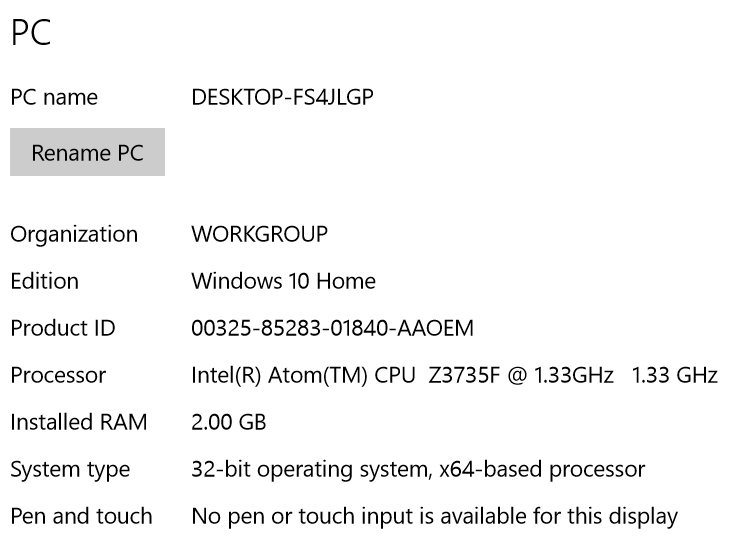Microsoft announced Windows 10 IoT Core for Raspberry Pi 2 and Minnowboard MAX boards a few months, and now the company has added a new ARM board to their Windows 10 IoT program with the soon-to-be-available Qualcomm DragonBoard 410c development board compliant with 96Boards specifications. Windows 10 IoT Core for DragonBoard 410c adds support for onboard WiFi and Bluetooth, as well as DirectX graphics on top of features already supported on the Raspberry Pi 2. To get started, you’ll need a computer running Windows 10, and follow DragonBoard’s Winfows 10 IoT Core guide. I assume most people familiar with Linux operating systems won’t suddenly jump ship to run a Windows operating systems, but Windows developers who got used to work with Visual Studio may be more comfortable with Microsoft’s environment. Out of curiosity, I’ve checked out if anybody had done any project with Windows 10 IoT core, and was surprised […]
Foxconn Kangaroo Intel Atom x5-Z8500 mini PC Includes a Fingerprint Scanner, Sells for $99
Most Cherry Trail mini PCs launched on the market are powered by Intel Atom x5-Z8300 processor, and few have been announced with x5-Z8500 or x7-X8700 processors which are more powerful, and do not cost that much more based on Intel’s recommended customer price. Foxconn Kangaroo is one of these mini PCs with an Atom x5-Z8500, 2GB RAM, and 32GB eMMC, which has a bonus includes a fingerprint scanner, and sells for $99 on Newegg. Foxconn Kangaroo specifications: Processor – Intel Atom x5-Z8500 Processor @ 1.44 GHz (up to 2.24 GHz) with 2M Cache and Intel Gen8 Graphics System Memory – 2GB LPDDR3 Storage – 32GB eMMC + micro SD slot Video & Audio Output – HDMI Connectivity – Wi-Fi 802.11ac & Bluetooth 4.0 USB – 1x micro USB port (for charging only), 1x USB 2.0, 1x USB 3.0 Misc – Fingerprint reader, 40-pin proprietary Kangaroo adapter, power button Battery Life […]
Rikomagic MK36S mini PC is Powered by Intel Atom x5-Z8300 Processor
Rikomagic MK36S is one of the latest mini PCs featuring Intel Atom x5-Z8300 processor combined with 2GB RAM and 32GB eMMC flash, and is basically a processor upgrade to the company’s MK36 mini PC based on Intel Atom Z3736F processor. MK36S specifications with highlights in bold showing improvements over MK36: SoC – Intel Atom x5-Z8300 “Cherry Trail” quad core processor @ 1.44 GHz (Burst/Turbo frequency: 1.84 GHz) with Intel Gen8 HD graphics @ 500 MHz System Memory – 2 GB RAM Storage – 32 GB eMMC + micro SD slot Video Output – HDMI Audio I/O – HDMI, 3.5mm microphone jack Connectivity – 10/100M Ethernet, dual band 802.11 b/g/n Wi-Fi, and Bluetooth 4.0 USB – 3x USB 2.0 host ports, 1x USB 3.0 port Misc – Power button, LED on top of device Power Supply – 12V/2A Dimensions & Weight – N/A The device will come pre-installed with Windows 10, […]
PiPo K1 is a Windows 10 Bay Trail Keyboard PC
Once upon a time keyboard computers were very popular, and some companies have tried to bring keyboard computers back to market in the last few years with limited success. PiPo is giving it a try too with PiPo K1 keyboard PC powered by an Intel Atom Bay Trail processor. PiPO K1 preliminary specifications: SoC – Intel Atom Bay trail processor (likely Z3735F or Z3736F) System Memory – 2GB Storage – 32 or 64 eMMC + micro SD port Keyboard – QWERTY with multi-touch touchpad Video Output – HDMI and VGA Audio – Stereo speakers Connectivity – Ethernet and WiFi USB – 2x USB host ports Misc – Power button Battery – Maybe… Power – TBD The keyboard should be pre-installed with Windows 10, and the touchpad support gestures like pinch and zoom. There may also be a battery to be able to use the keyboard from the sofa while connected to […]
UP Board is a Raspberry Pi Clone with an Intel Atom X5 Processor (Crowdfunding)
Many ARM based “insert-fruit-name-here” Pi boards are available on the market, and they all look like the Raspberry Pi board to some extends, but thanks Emutex we’ll soon get the “UP board” powered by Intel Atom x5-Z8300 and in Raspberry Pi form factor including the ubiquitous 40-pin Raspberry Pi headers, DSI and CSI connectors, and mostly the same port placements, with some extra goodies like a USB 3.0 port and Gigabit Ethernet. Up Board specifications: SoC – Intel Atom x5-Z8300 “Cherry Trail” quad core processor @ 1.44 GHz (Burst frequency: 1.84 GHz) with Intel Gen8 HD graphics @ 500 MHz System Memory – 1 GB DDR3L-1600 Storage – 16 or 32 GB eMMC Video Output / Display – HDMI, DSI connector Audio I/O – HDMI Connectivity – Gigabit Ethernet USB – 4x USB 2.0 host ports, 1x USB 2.0 pin header, 1x micro USB 3.0 port (under the board) Camera […]
MeLE PCG03 Plus mini PC Gets Cherry Trail x5-Z8300 Processor
Beside MeLE PCG02 TV stick with Ethernet, MeLE also showcased an upgraded version of its MeLE PCG03 mini PC with MeLE PCG03 Plus replacing Atom Z3735F processor with a more recent Intel Atom “Cherry Trail” x5-Z8300 processor. MeLE PCG03 Plus specifications show they’ve only changed the processor: SoC – Intel Atom x5-Z8300 “Bay Trail” quad core processor @ 1.44 GHz (Bust freq: 1.84 GHz) with Intel HD Gen8 graphics System Memory – 2 GB DDR3L Storage – 32 GB eMMC + SD card slot Video Output – HDMI 1.4, and VGA Audio I/F – HDMI, 3.5mm earphone jack Connectivity – 10/100M Ethernet, 802.11 b/g/n Wi-Fi, and Bluetooth 4.0 USB – 3x USB 2.0 host Misc – Power Button, power LED, Kensington security lock Power Supply – 12V/1A Dimensions – 150 x 120 x 40 mm There should be some performance improvements over the previous model, but nothing phenomenal. MeLE PCG03 […]
MeLE PCG02 Intel TV Stick Features an Ethernet Port
I’ve previously reviewed MeLE PCG01 TV stick powered by Intel Atom Z3735F, and found it to be well designed, without overheating issues, so that this Intel TV stick performed just as well as as bigger mini PCs. NotebookItalia found out that the company is now about to launch a new version at the Hong Kong Electronics Fair 2015. MeLE PCG02 is still based on the same Bay Trail processor, but it interestingly comes with an Ethernet port rarely found on TV sticks. Apart from the extra Ethernet port taking the place of one USB port, the specifications are pretty similar: SoC – Intel Atom Z3735F “Bay Trail” quad core processor @ 1.33 GHz (Bust freq: 1.83 GHz) with Intel HD graphics Gen 7 (2W TDP) System Memory – 2 GB DDR3 Storage – 32 GB eMMC + micro SD slot Video & Audio Output – HDMI Connectivity – 10/100M Ethernet, […]
Review of Voyo V2 Intel Atom Z3735F mini PC with Battery and SSD
Voyo V2 is another Intel Atom Z3735F mini PC pre-installed with Windows 10 Home, but it has some interesting features such as a 64GB SSD connected via a USB to SATA bridge on top of the regular 32GB eMMC, and a 5,000 mAh battery acting as a UPS. Since I have already received several of such platforms including MeLE PCG01, Wintel W8, and MeLE PCG03 and that there are usually few differences in regular benchmarks, I’ll focus on what varies between platforms: Windows activation status, storage and network performance, as well as power consumption. System Info and Windows Activation One of the shortcoming of this mini PC is that it only comes with a full sized USB port, and a micro USB port. So if you plan to use it as a PC with USB keyboard and mouse, you’ll need to use a USB hub, or at least a USB […]


